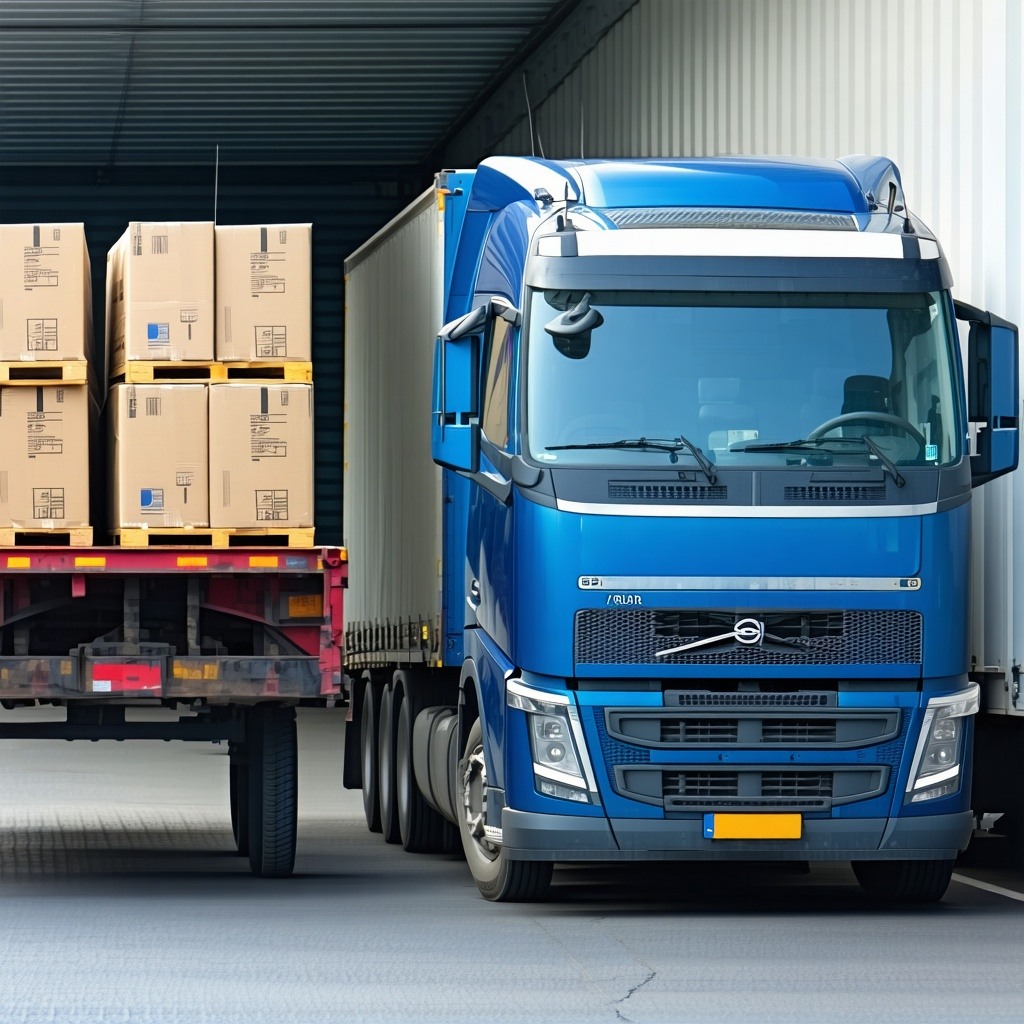Shipping Software for D2C Brands: Challenges and Solutions

What we’ll cover
Introduction
The Direct-to-Consumer (D2C) model is transforming the retail industry. It allows brands to sell directly to customers without intermediaries. With digital platforms enabling seamless transactions, the D2C landscape has witnessed an exponential rise. By 2025, D2C sales in the U.S. are expected to reach $226.53 billion, driven by both digitally native and established brands. However, as brands scale, they face significant logistical hurdles that can impact profitability and customer satisfaction.
Shipping and fulfillment play a crucial role in the D2C ecosystem. It affects everything from brand perception to repeat purchases. Unlike traditional retail, D2C brands manage shipping in-house or through third-party logistics providers. That requires optimized fulfillment processes to ensure smooth delivery experiences. Given rising consumer expectations, fast, reliable, and cost-effective shipping is a necessity. While brands often focus on customer acquisition costs, it is also vital to optimize the entire fulfillment process to meet customer expectations.
This article explores the key shipping challenges for D2C brands and offers practical solutions to optimize logistics operations. Whether managing high return rates, scaling for seasonal demand, or reducing shipping costs, implementing the right strategies can make a significant difference.
Key shipping challenges for D2C brands & their solutions
Shipping is one of the most critical touchpoints in a D2C customer’s journey. Delays, inefficiencies, and high costs can deter brand loyalty and hurt long-term growth. Below, we examine the major shipping and order fulfillment challenges that D2C brands face and the strategic solutions to overcome them. We also discuss the various solutions to streamline shipping processes using warehouse management systems, e-commerce shipping software systems, and inventory management systems.
🚨Challenge #1: Managing hyperlocal & national deliveries efficiently
D2C brands often cater to customers across multiple regions, from hyperlocal urban deliveries requiring same-day fulfillment to nationwide shipments with varied delivery timeframes. Managing these different supply chain operations while ensuring timely and cost-effective delivery can be complex and expensive.
Issue: D2C brands often need to cater to both hyperlocal (same-day/next-day) and pan-India deliveries, making logistics complex.
Coordinating between multiple carriers and optimizing delivery timelines is challenging. Hyperlocal deliveries demand instant fulfillment, while long-haul shipments require strategic route planning. Inefficiencies in allocation can lead to higher shipping costs, delays, and unsatisfactory customer experiences.
✅ Solutions
-
AI-powered carrier allocation: Intelligent algorithms automatically select the best carrier based on speed, cost, and destination. That will ensure an optimal shipping experience.
-
Hyperlocal & last-mile carrier integrations: Partnering with hyperlocal delivery services enables same-day or next-day shipping. It will enhance customer satisfaction.
-
Smart zone-based shipping rules: Dynamic zoning helps set delivery SLAs based on customer location. It helps reduce delays and improve reliability.
🚨Challenge #2: High RTO (Return to Origin) rates & COD order abandonment
D2C brands, particularly in markets like India, face high RTO rates, especially for Cash-on-Delivery (COD) orders. It leads to operational inefficiencies, increased costs, and blocked working capital.
Issue: D2C brands face 30-40% RTO rates, leading to huge losses & blocked cash flow.
Unverified addresses, fraudulent COD orders, and failed delivery attempts contribute to high return rates. These failed transactions disrupt inventory management and lead to financial losses for D2C brands.
✅ Solutions
-
AI-driven address verification & COD fraud detection: Automated tools validate addresses and identify fraudulent orders before dispatch. Using these tools can help reduce failed deliveries.
-
Smart NDR (Non-Delivery Report) management: Automated WhatsApp and SMS follow-ups help reschedule failed deliveries. It helps minimize returns and boost customer loyalty.
-
Prepaid conversion strategies: Offering discounts or incentives for prepaid orders encourages customers to opt for online payments. It reduces RTO instances.
🚨Challenge #3: Rising shipping costs & carrier inefficiencies
Shipping expenses make up a significant portion of a D2C brand’s operational costs. High shipping rates, fluctuating carrier fees, and inefficient allocation strategies can erode profit margins.
Issue: High shipping costs eat into margins, especially with dynamic pricing from courier partners.
Carriers often charge premium fees for expedited shipping, and a lack of real-time comparison leads to suboptimal selections. Inefficient carrier partnerships can result in higher costs and slower deliveries.
✅ Solutions
-
AI-based cost optimization: Real-time data analysis helps allocate shipments to the most cost-effective carrier without compromising speed.
-
Multi-carrier rate shopping: A dynamic system compares shipping rates across multiple logistics providers to ensure the best pricing for each shipment.
-
Carrier performance analytics: Continuous tracking of delay rates, NDR percentages, and cost per shipment enables brands to make data-driven decisions to optimize logistics.
🚨Challenge #4: Scaling logistics for festive & sale season spikes
Seasonal spikes during festivals and major sales events like Black Friday and Diwali bring an influx of orders. It strains logistics operations and causes delays. The D2C brand that manages it well can have a competitive advantage.
Issue: Shipping delays, carrier failures & fulfillment bottlenecks during peak seasons.
Shipping bottlenecks during peak demand lead to delayed deliveries, increased returns, and poor customer experiences. Brands that fail to prepare adequately for such spikes face lost sales opportunities.
Solutions
-
Dynamic load balancing across multiple carriers: Distributing shipments across various logistics partners prevents overload and ensures smooth fulfillment.
-
Warehouse & fulfillment automation: Smart allocation of inventory reduces transit time and accelerates the shipping process.
-
Predictive demand forecasting: AI-driven insights analyze historical trends to anticipate demand spikes and allocate resources accordingly.
🚨Challenge #5: Delivering an Amazon-like post-purchase experience
Customers now expect a seamless post-purchase experience. This experience includes real-time tracking, proactive notifications, and hassle-free returns. Brands that successfully offer an experience as good as this end up building sustainable businesses.
Issue: Customers expect real-time tracking, proactive updates & seamless returns.
Lack of visibility and poor communication about order status results in customer dissatisfaction and higher support queries.
✅ Solutions
-
Branded tracking pages: White-labeled tracking pages with brand customization keep customers engaged and informed.
-
Real-time shipping notifications: SMS, WhatsApp, and email alerts at every stage provide transparency and reduce “Where is my order?” (WISMO) inquiries.
-
Self-service returns portal: A streamlined system allows customers to initiate returns and replacements with minimal friction. It ultimately improves brand trust.
How ClickPost helps D2C brands scale shipping automation?
D2C brands require an agile logistics framework that supports their growth trajectory without overwhelming operational capacity. ClickPost offers a tech-driven approach to streamline fulfillment and enhance the customer experience.
ClickPost standout features:
-
Scalable Tech: ClickPost’s platform enables rapid expansion across digital and offline channels without adding operational burden.
-
Rule-Based Carrier Allocation: A combination of fixed and custom rules enables carrier selection to be automated in accordance with a different metrics, like low RTO rates and fewer delivery exceptions.
-
End-to-End Tracking: White-labeled tracking pages, real-time notifications, and predictive delivery dates create a smooth and branded customer journey.
-
Automated NDR Journey: Preset workflows help determine and carry out the best systems for communicating with customers after a failed delivery to ensure fulfillment.
With ClickPost, D2C brands gain complete visibility over their shipments, optimize shipping costs, and deliver a seamless post-purchase experience.
Streamline your shipping experience with ClickPost

Conclusion: The future of D2C logistics
Efficient shipping operations can be a game-changer for D2C brands. It influences customer loyalty, cost efficiency, and long-term growth. As the D2C sector continues to evolve, investing in smart shipping automation ensures a competitive edge in the fast-paced e-commerce landscape.
Brands that leverage data-driven logistics, multi-carrier integrations, and proactive customer communication will emerge as leaders in the space. With the right shipping software, D2C brands can reduce costs, minimize delays, and enhance customer satisfaction. It ultimately helps drive sustainable growth in the market.


.png?width=879&height=549&name=Page%2074%20(1).png)